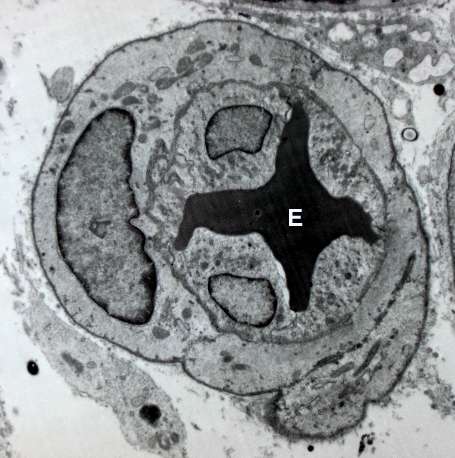Engineering new blood vessels in people is one step closer to reality

Scientists moved a step closer toward coaxing the body into producing its own replacement blood vessels after discovering that suppressing parts of the innate immune system may raise the chances of a tissue engineered vascular graft's success. In a report appearing in the May 2015 issue of The FASEB Journal scientists showed that by controlling the reaction that natural killer cells, platelets and the acute inflammatory response have to the graft, they could also reduce the abnormal narrowing of the grafts, called stenosis, which is the cause of most failures. This discovery sets the stage for a second, more successful, generation of tissue engineered grafts designed to help regenerate components of the cardiovascular system.
"Our aim is to extend these findings toward the development of a safe and effective tissue engineered vascular grafts for the management of congenital heart disease," said Cameron Best, a researcher involved in the work from the Tissue Engineering and Surgical Research Department at the Research Institute at Nationwide Children's Hospital in Columbus, Ohio. "We hope that our translational approach is applicable to other areas of regenerative medicine and a model for investigators in the field."
Best and colleagues made this discovery by observing that immunodeficient mice mount a blunted acute inflammatory response to implanted tissue engineered vascular grafts and that stenosis, or narrowing of the blood vessel, did not occur. Researchers then treated normal (wild type) mice with either a natural killer cell depleting antibody or anti-platelet drugs and found that the rate of stenosis in each of these models was about half of that observed in the normal, untreated, mouse. This suggests that the combined effects of acute inflammation, natural killer cells and platelets are critical to tissue engineered vascular graft performance.
"When most people think of regenerative medicine, they think of growing new hearts or kidneys," said Gerald Weissmann, M.D., Editor-in-Chief of The FASEB Journal. "What most people don't realize is that just being able to engineer new blood vessels would go a long way toward saving lives and alleviating suffering. This research is significant because it identifies what goes wrong with today's engineered blood vessels, and reveals a solution on what to do to fix this problem."
More information: Narutoshi Hibino, Dane Mejias, Nicholas Pietris, Ethan Dean, Tai Yi, Cameron Best, Toshiharu Shinoka, and Christopher Breuer. The innate immune system contributes to tissue-engineered vascular graft performance. FASEB J. DOI: 10.1096/fj.14-268334


















